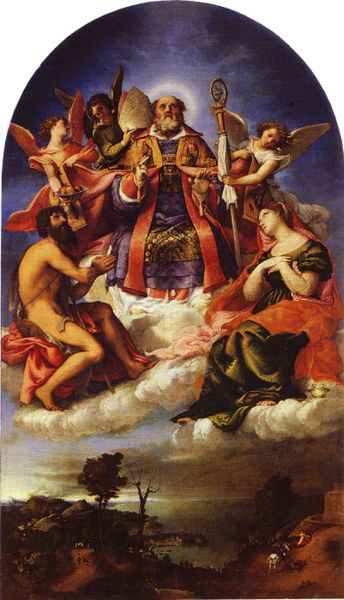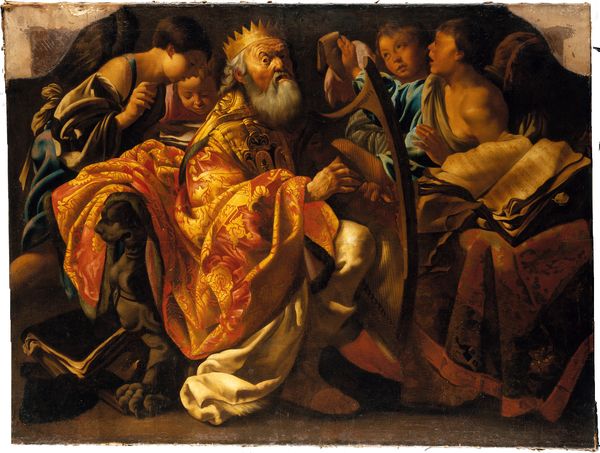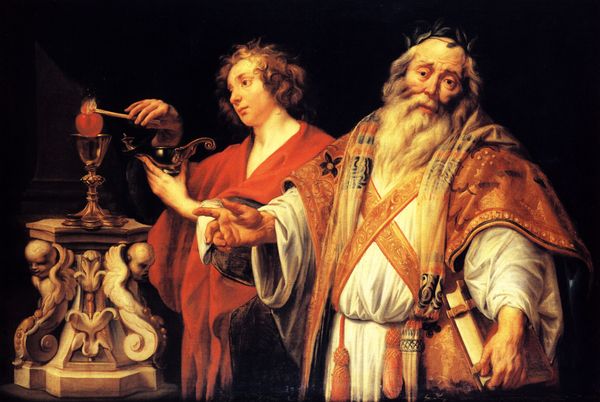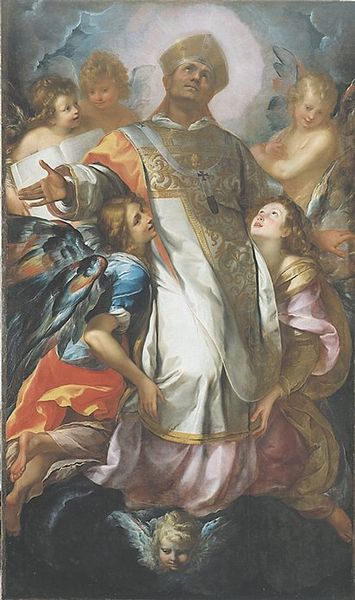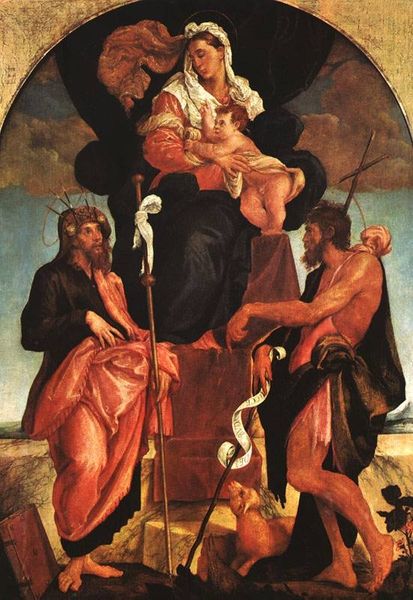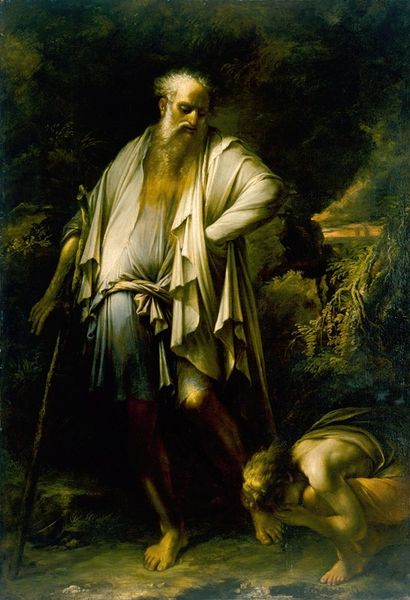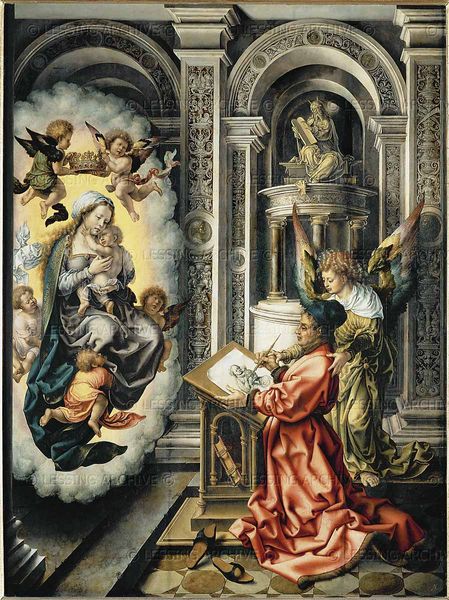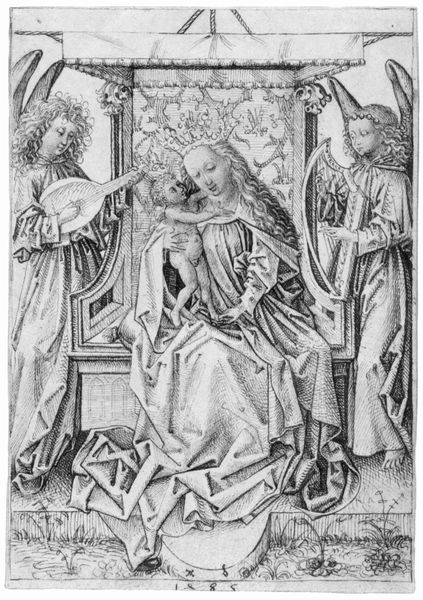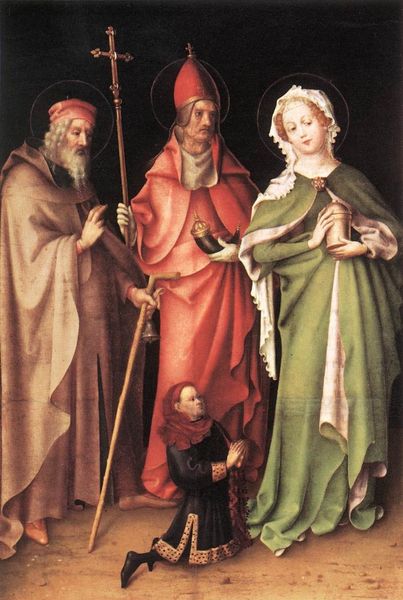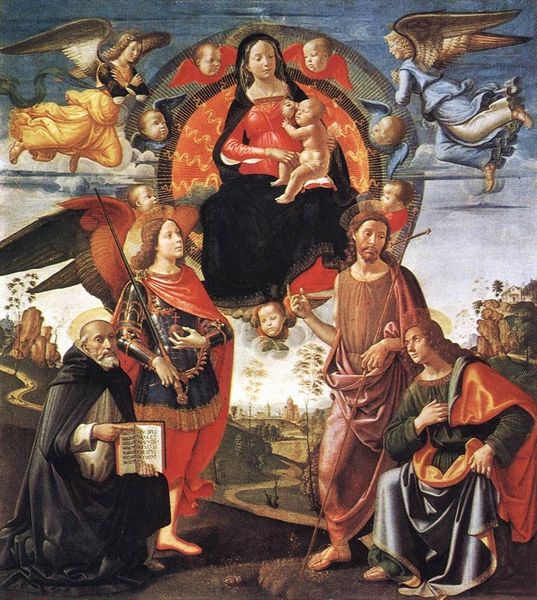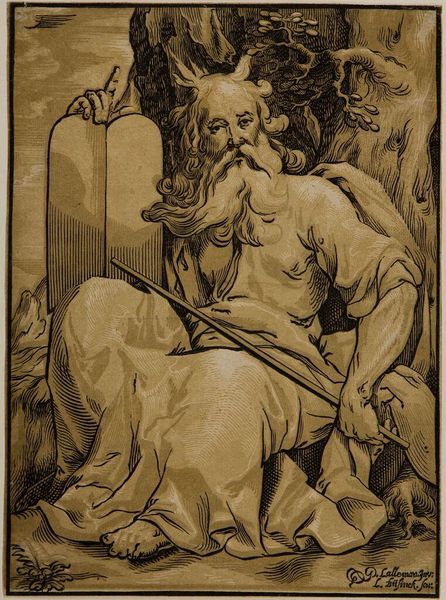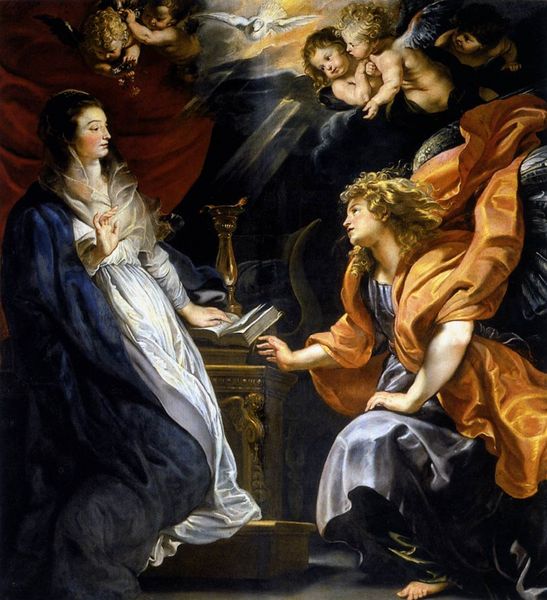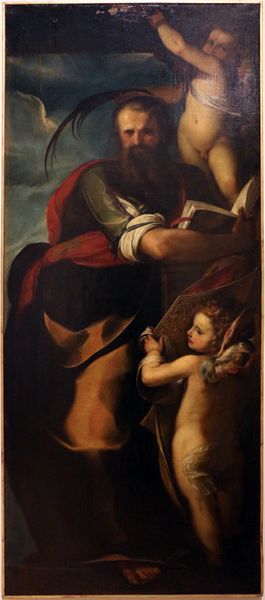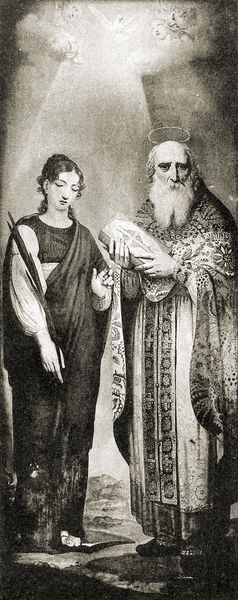
painting, oil-paint, fresco
#
portrait
#
baroque
#
painting
#
oil-paint
#
figuration
#
fresco
#
history-painting
Dimensions: 460 x 150 cm
Copyright: Public domain
Curator: Let's turn our attention to Peter Paul Rubens' painting from about 1610, entitled "Raising of the Cross - Sts Amand and Walpurgis". Editor: Wow, there's an immediate sense of hierarchical staging here! My eye travels from the dark background toward those bright angels floating above and downwards to the saints, each placed deliberately within this rigid framing. Curator: Right, and it's vital to consider where and how a work like this functioned originally. Knowing the process informs how we experience it. This was part of a group of frescos in the church, Saint Walburga. Each panel tells its own story while fitting within a complete pictorial and religious program. The fresco technique itself— pigment bound in the wet plaster—became literally embedded into the wall of a place of worship. It was fixed. Editor: You’re correct, these figures are frozen in place; it makes one think about the rigidity of Baroque society too. Look at how St. Walpurgis stands rigidly next to St. Amand. It says so much about gender, social norms and power dynamics inherent in that period! It reminds me of that Simone de Beauvoir quote, "One is not born, but rather becomes, a woman”. Walpurgis has certainly *become* what society expected of her. Curator: Certainly! Look how Rubens also employs precious materials to evoke social meaning. These expensive pigments denote religious authority and emphasize that hierarchy we were just speaking about, it makes me consider where those pigments came from, and how that work ties into a global network. It is not a self contained object. Editor: That connection with the church also meant accessibility, and not necessarily the kind Rubens was thinking. Frescos were, in fact, one of the few public venues for viewing women in positions of power at that time. I think Rubens was playing with that here. Curator: I hadn't considered that; but, as usual, your intersectional view yields so much. The ways art reflects and even reshapes norms are often interwoven into material choices and making techniques, and are not just a product of history, but a vital part of its ongoing creation. Editor: I’m reminded of how our work can continue that making through new ways of seeing the art historical narrative itself!
Comments
No comments
Be the first to comment and join the conversation on the ultimate creative platform.
